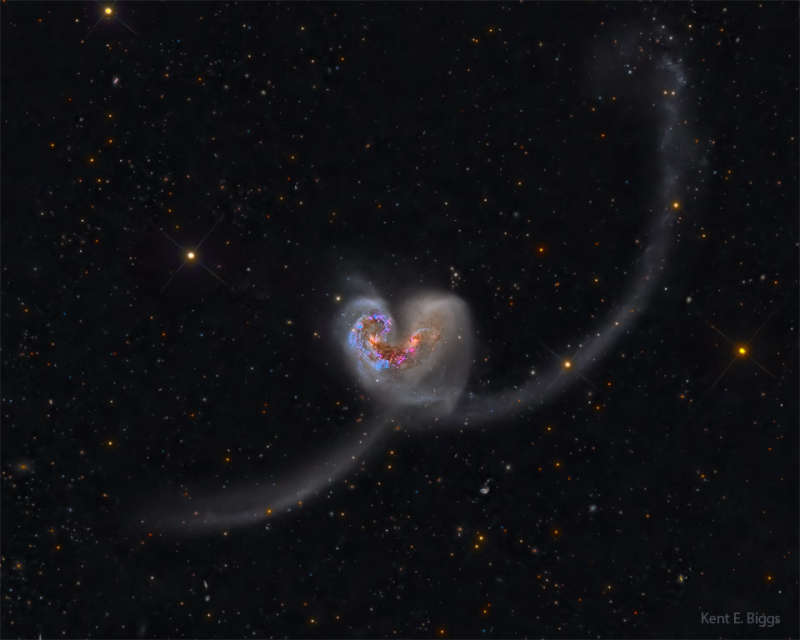
|
Credit & Copyright: Kent E. Biggs
Explanation:
Are these two galaxies really attracted to each other?
Yes, gravitationally, and the result appears as an
enormous
iconic heart -- at least for now.
Pictured is the pair of galaxies cataloged as
NGC 4038 and NGC 4039,known as the
Antennae Galaxies.
Because they are only 60 million
light years away, close by
intergalactic standards,
the pair is one of the best studied
interacting galaxies on the night sky.
Their
strong attraction
began about a billion years ago
when they passed unusually close to each other.
As the two
galaxies interact, their
stars rarely collide, but new stars are
formed when their interstellar gases crash together.
Some new stars have already formed, for example, in the long antennae seen extending out from the sides of the dancing duo.
By the time the
galaxy merger is complete, likely over a
billion years from now, billions of new stars may have formed.
Open Science:
Browse 3,300+ codes in the Astrophysics Source Code Library
|
January February March April May June July August September October November December |
| ||||||||||||||||||||||||||||||||||||||||||||||||
NASA Web Site Statements, Warnings, and Disclaimers
NASA Official: Jay Norris. Specific rights apply.
A service of: LHEA at NASA / GSFC
& Michigan Tech. U.
Based on Astronomy Picture
Of the Day
Publications with keywords: NGC 4038 - NGC 4039 - antenna galaxy
Publications with words: NGC 4038 - NGC 4039 - antenna galaxy
See also:
